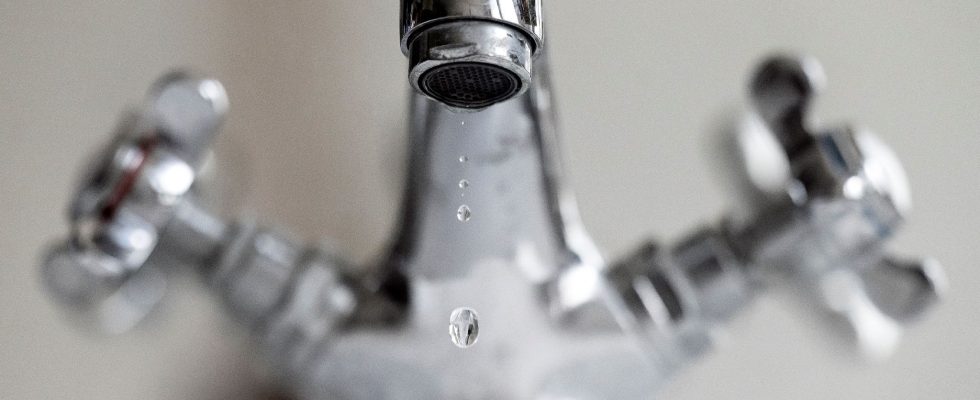After electricity, the French are called to sobriety on the water. The summer of 2022 was marked by a historic drought, while the winter did not really allow groundwater to be recharged in France. Before the heat of the summer, the government launched Saturday, June 3 a communication campaign, entitled “Every gesture counts”, intended to encourage water savings.
The French are thus invited to adopt simple daily actions to reduce their consumption, including showers not exceeding 5 minutes or even the planting of plants that consume little water. In February, the President of the Republic, Emmanuel Macron, had already pleaded for a “sobriety plan for water” on the model of the “energy sobriety plan” launched to contain the effects of the war in Ukraine, adding that it was necessary to resolve at the “end of abundance”. But, what is the real water consumption in France? What are the uses of drinking water?
148 liters of water consumed on average per day
In total, in France, the Ministry of Ecological Transition estimates that approximately 33 billion cubic meters of water are withdrawn each year (excluding hydroelectricity), of which 5.3 billion are intended for the production of drinking water, particularly for households.
After a marked increase between 1975 and 2004, going from 106 liters per day and per person to 165, water consumption among the French has experienced a slight drop over the past twenty years. In a final report published in 2022, the Observatory of public water and sanitation services (Sispea) reveals that each inhabitant uses an average of 148 liters of drinking water per day. That is 54,750 liters over the year. In households, water is mainly used for hygiene and cleaning needs (93%), more than for food (7%). In detail, according to Sispea, 39% of the water consumed in the home is used for personal hygiene, 22% for washing clothes and dishes, 20% for flushing, 6% for the kitchen, as much for washing the car or watering the garden, and only 1% for drinking.
However, so-called “indirect” water must be included in the calculation of consumption per citizen. In other words, the water consumed through services and consumer objects (schools, hospitals, communities, shops, etc.). By integrating it, consumption thus reaches 1,875 cubic meters per year and per inhabitant in France.
Territorial disparities
Regarding water consumption, as in many other areas, there is a real disparity between territories. The further down in the south of the country, the more the French consume it. The climate plays on this differential, as does tourist pressure, the presence of private swimming pools and gardens.
According to data published in January 2023 by the Ministry of Ecological Transition, “the volumes of water consumed per inhabitant are greater in the southern departments of the metropolis”. For example, a resident of Hauts-de-France consumes 109 liters of water per day, while the average in Provence-Alpes-Côte d’Azur is 228 liters per day. The figures also indicate that the departments of Guadeloupe, Martinique and Réunion have above-average domestic drinking water consumption, linked to residential development, demographic pressure, but also to outdoor watering, a practice widespread in Reunion.
Possible savings on leaks and small gestures
Through its awareness campaign, the government hopes to save water. In homes, there are a series of small gestures to be applied, including the installation of a flow reducer on the taps and in the shower or that of a rainwater collector…
But the executive is also betting on an active fight against leaks, especially those related to oversights, such as poorly closed taps or leaky flushes. According to water information center, they can represent between 15 and 20% of household water use. One drip from the tap represents 4 liters of water per hour; 25 for a leaky toilet.
Another track of the government to reduce water consumption: the repair of leaks, both in individuals and in the pipes that lead water there. According to figures published in March 2023 by the National Observatory of Biodiversity, 20% of the drinking water produced escapes because of these leaks. That is the equivalent of 937 million cubic meters of water lost each year. This corresponds to the average annual consumption of a population area of 18 million people (like Ile-de-France). In question: an aging pipeline network dating for the most part from the 1970s, which should undergo improvements in the coming years.
